
Calum Muskett and Tom Randall have made the ninth and tenth ascents of James Pearson's The Walk of Life (E9 6c).
The route, a sixty metre single pitch of slab climbing, was the first to take on the full height of the main cliff at Dyers Lookout. Initially graded E12 7a upon its first ascent in 2008, second ascensionist Dave MacLeod regraded it as E9 6c the following year after having spent just four days on the route, which is where the grade has since settled. Speaking to UKC in 2010, Dave Birkett, who made the third ascent, said 'It's a stunning looking wall and an amazing feature ... When everything settles down as regards the grade and the hype that surrounds it, it will be heralded as a modern extreme classic of the 21st Century'.
The main challenges posed by the route are a combination of both highly technical climbing on small footholds, and the psychological difficulty of remembering the beta and staying focused throughout, often while making slow progress high above gear that is less than ideal.
Angus Kille, who made the seventh ascent of the route, told us after he climbed the route that 'it feels as if the rock is conspiring against you, never pairing reasonable footholds with reasonable handholds, and few of the thousands of cracks actually hold gear ... you do need quite a lot of psychological endurance as you've got to make hundreds of moves, most of them run-out above OK kit, and progress up the 50m wall is mostly quite hard-earned'.

Similarly, Birkett said that whilst he didn't get pumped, the route was 'very fingery' and 'mentally arduous. Your fingers feel strained from pulling on all the small edges. Feet are very technical, the crux though is to remember all the moves' as well as to be able to handle the additional weight of the rope towards the upper end of the route.
I got in touch with Calum and Tom to see what they thought of the route:
Congratulations! How long has The Walk of Life been on your to-do list?
Calum: Ever since seeing pictures of James Pearson climbing it in the magazines when I was a teenager. It looked like an amazing pitch up a great feature.
Tom: It's one of those routes I've wanted to try ever since I saw the original footage of James making the FA. It seems so impressive, such a pure bit of rock that it really got into my mind. That said, I honestly thought it was more of a pipe dream (I'm not really a bold slab climber) until I started climbing quite a bit of slab stuff with Anna Hazelnutt these past couple of years.
How is the climbing?
Tom: Oh it's incredible!!! It's a desert island route for sure. It's really long, and almost feels like four routes in a oner. Almost everything is super technical, so you get interesting moves all the way, and the rock is never 100% so it changes over time and it's tricky to totally relax on the holds. I've probably broken 10-20 holds on it just while trying moves.
Calum: The climbing is never desperate, but there's a lot of it. The first section is a bold 12m E8 (7b+), climbing up a slab with some fairly mediocre skyhooks and a small hand placed pecker hook with the nose snapped off, so, not bomber. You then have 15m of fairly easy pulling before a long sustained slab/wall climb up thin, but relatively well protected cracks. It never exceeds about V4 but slowly adds up and is pretty continuous all the way to the top.
Did you practice it on toprope? If so did you attempt it in one go before going for the lead, or did you work it in sections?
Tom: Just worked it on a mini traxion. I think on my first lead I'd done it in two halves and just felt psyched to go for it. All the individual sections felt very comfortable though.
Calum: Tom had been to try the route on a few previous visits, so had some good beta for practising the route with a couple of static lines down the route splitting the pitch into the two distinct sections so we could both try it on a micro traxion at the same time. I had two sessions of about 2 hours on the route on Thursday and Friday, and linked the two sections in one on a micro traxion fairly quickly. I couldn't spend too long on the route because my skin felt a bit tender and my toes were sore, and after seeing early on that I could lead it this trip, I wanted to preserve as much strength and skin as possible! We also had a bottom-rope of the bold slab briefly on the Saturday, then again as a warm up for the route on Sunday.
How did your process differ from one another?
Tom: I think it was fairly similar? Just that I knew the route a lot better than Calum.
Calum: They were pretty similar, although I was very thankful for Tom chalking the pitch up and placing the gear on abseil for me to then replace on my harness as I abseiled down before leading it, as it saved me a lot of time and effort!
How many headpoint attempts did it take once you went for it?
Tom: I had one last Autumn when I totally bust a pulley on the route (basically at the point where James takes that massive whipper in the film) and then just one this past weekend.
Calum: I did it on my first lead go. I was really impressed with Tom going back for it after his lead fall and tendon injury. I wouldn't be very keen to lead that bottom slab again! Same goes for James Pearson and Dave Birkett falling off before they succesfully climbed it.
Was there any pre-placed gear or did you place it all on lead?
Calum: We both placed all the gear on lead. The rack wasn't too heavy, but I really struggled to remember where anything actually went even with all the gear racked in the correct order!
Tom: Actually there was a stuck nut! Calum couldn't get it out so I took the 'freebie' as it's in the easy climbing. Placing the gear on this route deffo makes a significant difference, as there's quite a bit of it and it's fairly fiddly.
Whenever anyone does this route, there's always a lot of conversation about the gear and how good or bad it is. How did you find it?
Calum: It's only the first 12m that's bold, after that I thought it was well protected on small kit, and if anything did rip it's not far to the next piece.
Tom: Mostly it's RPs and small friends. When I say small friends, I mean the micro ones where it's around a Rock 2 to Rock 4 size. As I recall there's perhaps a single friend 1 on the route?? It's rarely 100% bomber, but also not total crap, so realistically high on the route you should be totally fine to fall off, even if it does feel a bit scary.
Previous ascensionists have spoken about the psychological challenge of this route as being just as hard, or ever harder than the physical climbing, what are your thoughts on the psychological aspect of the route?
Tom: Totally agree. I am most definitely not a climber who's very good at exposed long routes, and I struggle with the fear a bit. For me, the hardest thing was getting into a totally relaxed zone so that I didn't have to overgrip at any point. The other thing that was really important to the process was that I went and visited Talo Martin in Spain the week before, and had some slabducation from him... that really helped my confidence a lot!
[You can check out Talo's film 'Slabducation' here]
Calum: It's a very big pitch, therefore hard to remember all the climbing sequences and gear placements, and also tough not to be overwhelmed. The climbing is tricky enough at 8a or 8a+, but it's more psychologically challenging to have to re-set after climbing a bold first section, to then reach a long stamina plod. It's also quite hard work for your feet, and I was climbing in twice re-soled Scarpa Instincts which were a little on the soft side, but at least quite comfortable.
Calum, you seem to be in particularly good form right now, having climbed both XII 12 and E9 6c in the space of ten days! Have you been doing any specific training to get into such good form? Has anything changed recently that has led to your recent run of form?
My training has been limited to between 0-3 indoor wall sessions per week over the last couple of months, and I was on a family surf and paraglide holiday in Morocco for the week before I climbed Banana Wall. The Walk of Life does suit my style down to the ground, but requires some good finger strength/endurance and keeping collected the entire time. Banana Wall on the other hand would be very difficult and impressive to onsight placing the gear on lead, but not so bad when you know where the hooks are from your previous go and have the gear in - more of a Cairngorm style M10 like that.
With regards to anything changing, we've got a second child on the way in the early summer, so I'm pretty desperate to make the most of any free time now before a busy ski-guiding season starts next week and then the inevitable carnage of looking after a toddler and a baby!
Another question for you, Calum, from UKC's resident ultramarathon runner, Rob Greenwood: In addition to being a climber, you've done a lot of fell running in the past, including a Paddy Buckley in 2021. Do you think that the strength in your legs was a benefit, or is the fact that they're a whole lot less flexible a drawback?
Good to have a question from 'The Human Lung' as he used to be known when he was living and fell racing in Wales! I spend a lot of time on my legs guiding, do a lot of alpinism, and also go through phases where I'm into my running or road/mountain biking. I really enjoy it, but am pretty sure it has a negative impact on climbing as I'm so heavy! I'm not too badly affected by lack of flexibility though, apart from in stemming corners!
Finally, Tom, we saw you working the route with Anna Hazelnutt last year, how was it trying the route with someone so new to trad climbing? Did you learn anything specific from your time on the route together?
Yeah it was brilliant. Honestly, she's just a lot of fun (like Pete) and has an attitude towards learning that's good to be around. I'm really into good climbing partnerships (maybe because I'm not always the strongest in my headspace, so I rely a bit on others to help) and since I've had so much personal reward from climbing with Pete over the years I now recognise those 'good' aspects of positive partnerships where each person pushes the other to be a bit better, but also supports the other when stuff is tough. Tricky to articulate exactly, but I know it's had a big impact for me. I'd be pretty confident in saying that if she keeps going at the rate she is at the moment, she'll climb quite a bit harder than E9.
Check out the film of James' first ascent from back in 2008, 'massive whipper' included:

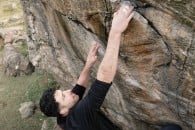

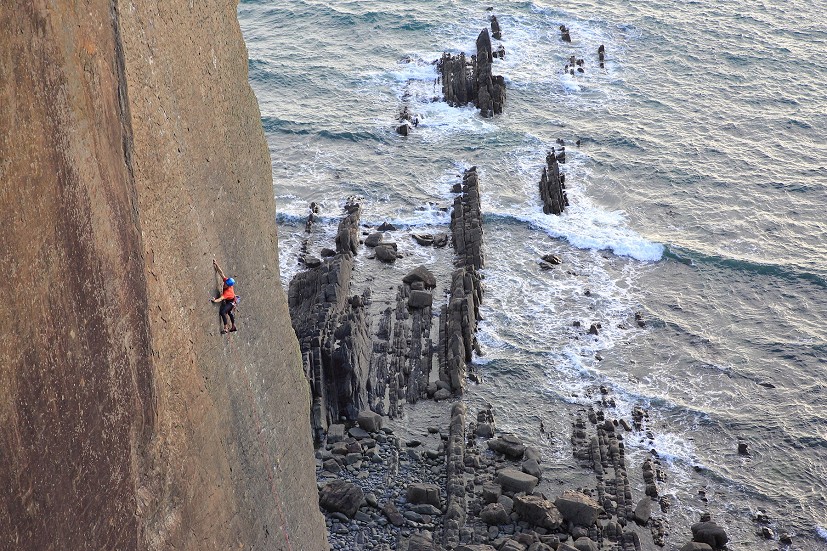

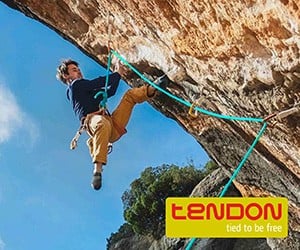



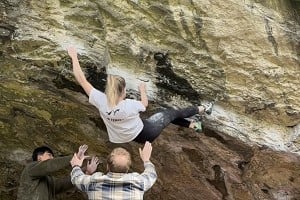
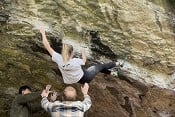
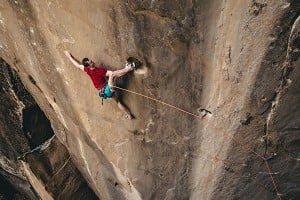
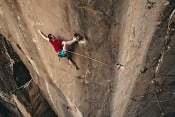


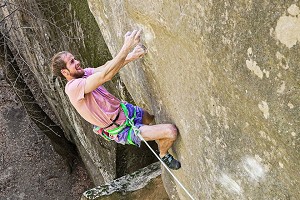
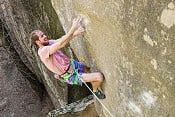



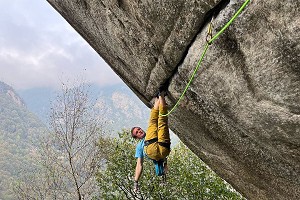
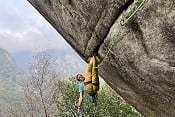
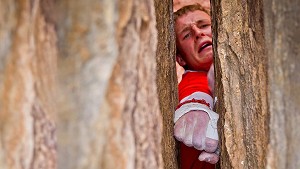


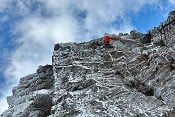
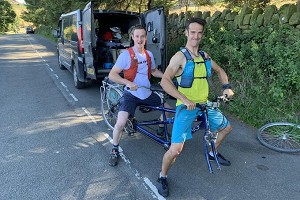
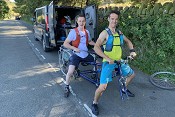
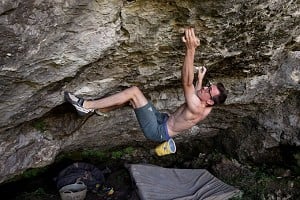
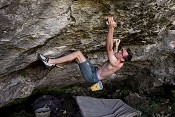
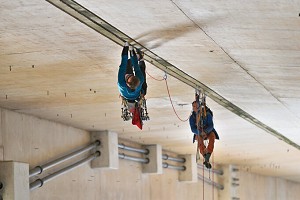
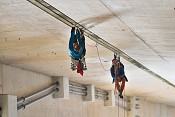
Comments
Amazing work by those guys. Here's a thought though..It was said in the article that quite a few holds broke off in the attempts. Does that maybe mean the grade has gone up? If enough holds break off then maybe one day it will be the E12 it was once proclaimed to be! Well... maybe not
Amazing climbing in the original James Pearson film. That fall...I was not expecting that. The South West has a good few routes with 50/60 mtr runouts, so you require lot of stamina on first acquaintance. Climbs like Matchless, Burning Bridges, Equipoise and New Horizion. All very long pitches. But no matter what the grade, its what makes South West climbing so great. The bit about pumped toes I recognise. It's not always about the fingers. Thanks for posting.
Sounds like Rob G is up for an ascent next with his strong legs :D
So solos then. Or did you mean 50/60m long routes with long runouts.
Strong on legs, weak on fingers 😅